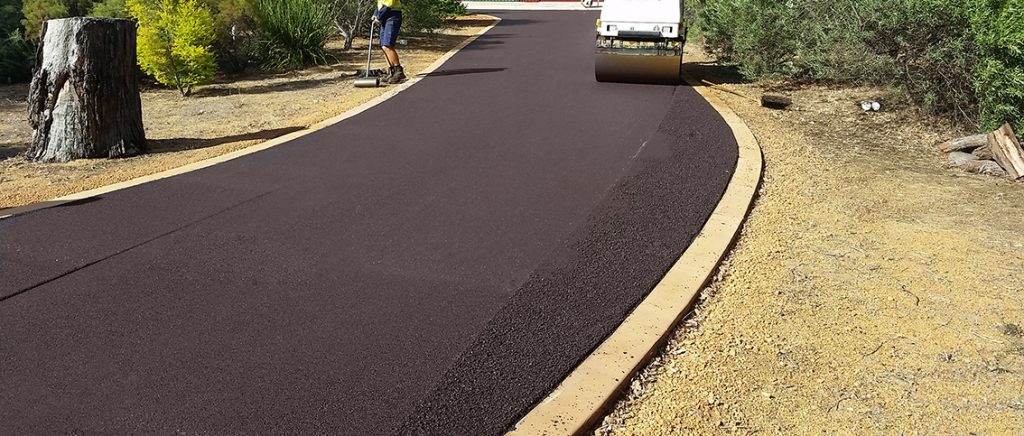Experience the Difference: Hot Mix Asphalt Paving for Regrading Projects
Wiki Article
Opening the Keys of Warm Mix Asphalt Modern Technology
Checking out the depths of warm mix asphalt innovation uncovers a globe where exact formulations and thorough processes assemble to shape our roadways and infrastructure. The blend of accumulations, fillers, and binders isn't simply a building and construction task yet a calculated orchestration of resilience and performance.Value of Hot Mix Asphalt
Warm Mix Asphalt plays an essential role in contemporary facilities advancement due to its toughness and cost-effectiveness. As the most generally made use of leading product for roadways, freeways, and car park whole lots, Warm Mix Asphalt offers a range of advantages that add to its relevance in building and construction tasks.The durability of Warm Mix Asphalt stems from its structure, which consists of accumulations, binder, and filler materials that are meticulously picked and blended to fulfill specific efficiency requirements. In general, the value of Warm Mix Asphalt in framework development can not be downplayed, as it continues to be a cornerstone of contemporary building and construction techniques.
Parts of Asphalt Mixes
The structure of asphalt blends is composed of thoroughly selected accumulations, binder, and filler products that are crucial for accomplishing particular performance demands. Aggregates are the main component of asphalt mixes, offering strength and security. These accumulations can be natural, such as crushed rock or crushed stone, or artificial, like recycled products from old sidewalks. The binder, normally bitumen or asphalt concrete, holds the accumulations together and provides flexibility and durability to the mix. The choice of the binder is important as it straight affects the mix's efficiency in various climate problems. Fillers, such as hydrated lime or Rose city cement, are used to boost the mix's workability and aging resistance. Angled Parking.The mix and proportion of these components play a considerable function in figuring out the top quality and efficiency of the asphalt mix. Designers very carefully make the mix to fulfill details needs, taking into consideration variables like traffic quantity, climate problems, and pavement lifespan. Correct selection and harmonizing of accumulations, binder, and fillers are crucial for developing sturdy, durable asphalt sidewalks.
Mixing and Production Techniques

Once the accumulations are picked, the binder, often asphalt cement, is contributed to bind the materials together. The binder's quality and amount considerably influence the mix's versatility, strength, and resistance to environmental factors. Additionally, fillers like hydrated lime or Portland concrete might be integrated to boost certain characteristics of the asphalt mix, such as its workability or dampness resistance.
Throughout production, the aggregates and binder are heated, typically in between 250-325 ° F(121-163 ° C ), to assist in blending and make sure correct finishing of the accumulations. The blending procedure should be extensive to achieve a homogeneous blend that advertises the preferred efficiency attributes of the asphalt. Numerous methods, such as batch blending or drum blending, are employed to attain constant and high-grade asphalt mixes for construction tasks.
Variables Impacting Asphalt Performance
Factors affecting asphalt performance include a variety of variables that impact the resilience, long life, and general top quality of asphalt pavements. One vital element is the top quality of materials made use of in the asphalt mix. The type and source of aggregates, the binder top quality, and the additives all play a substantial role in establishing the performance of the asphalt pavement. The rank of aggregates is vital as it affects the mix's resistance, security, and workability to rutting and breaking.:max_bytes(150000):strip_icc()/low-section-of-man-working-758486719-59da6d0a054ad90010617854.jpg)
Style factors to consider, such as sidewalk density and water drainage, are essential in guaranteeing the long-lasting efficiency of the asphalt sidewalk. By thoroughly thinking about these factors, contractors and engineers can enhance asphalt performance and enhance the service life of sidewalks.
Lasting Practices in Asphalt Innovation

Additionally, the growth of warm-mix asphalt (WMA) modern technologies has actually obtained grip in recent times. WMA allows for the production and positioning of asphalt mixes at lower temperature levels contrasted to conventional hot-mix asphalt, resulting in reduced energy consumption and greenhouse gas exhausts. In addition, making use of porous asphalt mixes can aid alleviate stormwater runoff concerns by enabling water to infiltrate via the pavement and into the ground, advertising natural water purification and charge procedures. By applying these sustainable techniques, the asphalt industry can contribute to building a more ecologically friendly and resistant infrastructure network.
Final Thought
Finally, warm mix asphalt modern technology plays an essential function in contemporary framework growth as a result of its durability and cost-effectiveness. By thoroughly balancing useful link elements, utilizing appropriate mixing methods, and thinking about different aspects, engineers can produce premium asphalt blends that stand up to hefty web traffic tons and severe weather condition conditions. Embracing sustainable techniques, such as using warm-mix modern technologies and recycled products, better improves the environmental friendliness of asphalt technology.
Blending and production techniques in warm mix asphalt modern technology include the exact mix and processing of aggregates, binder, and fillers to develop a long lasting and high-performance asphalt mix.Factors affecting asphalt performance encompass an array of variables that affect the sturdiness, longevity, and total high quality of asphalt pavements. Lasting techniques in asphalt innovation encompass numerous efforts aimed at minimizing the environmental influence of asphalt production and paving procedures. By integrating reclaimed asphalt sidewalk (RAP) and recycled asphalt shingles (RAS) right into new asphalt blends, the industry can significantly minimize the consumption of raw products and energy, while likewise decreasing garbage dump waste.
WMA allows for the production and positioning of asphalt mixes at reduced temperatures compared to typical hot-mix asphalt, resulting in minimized power usage and greenhouse gas exhausts.
Report this wiki page